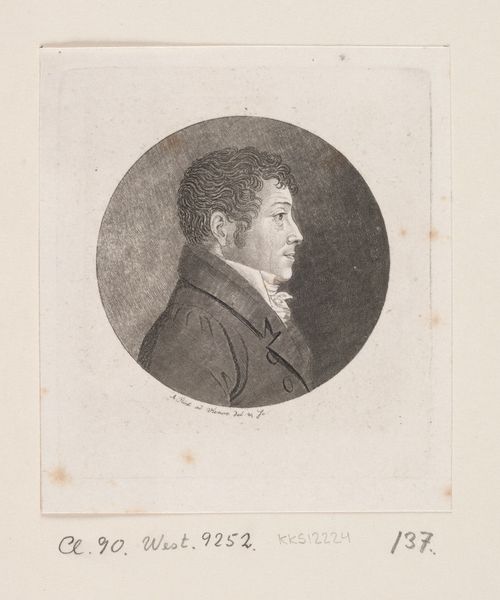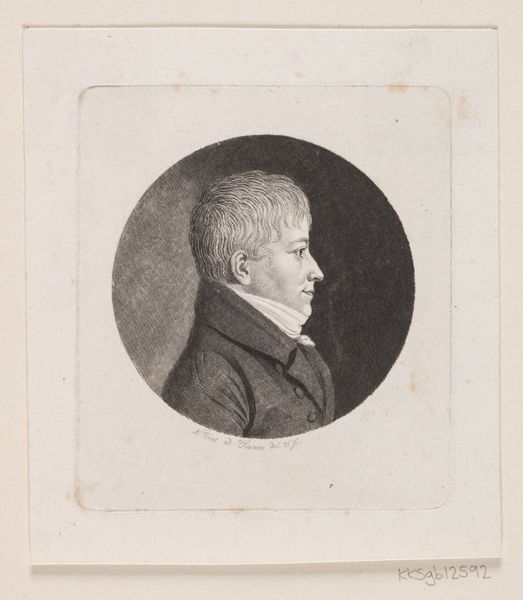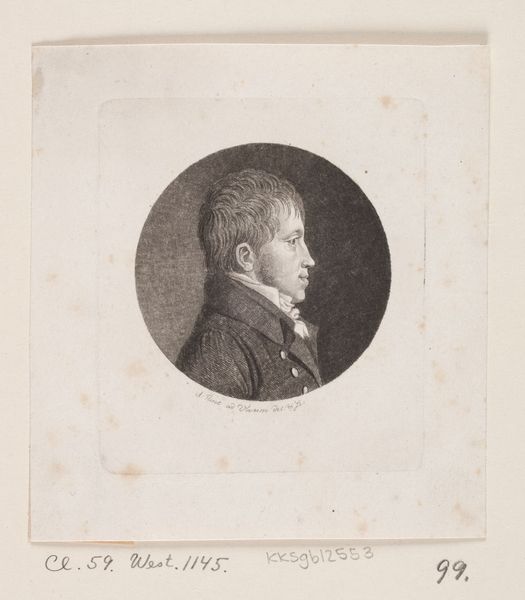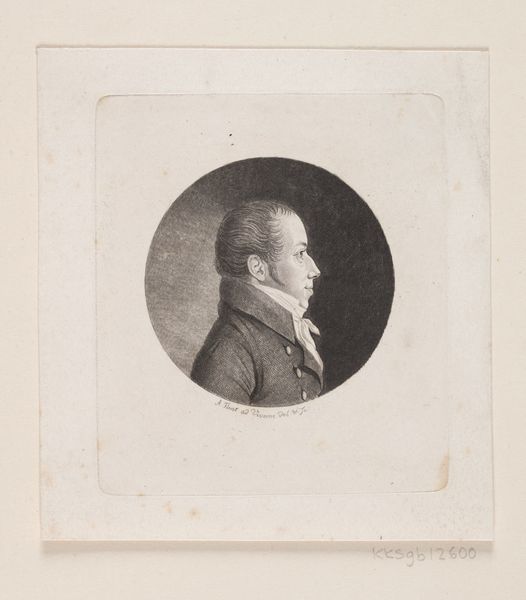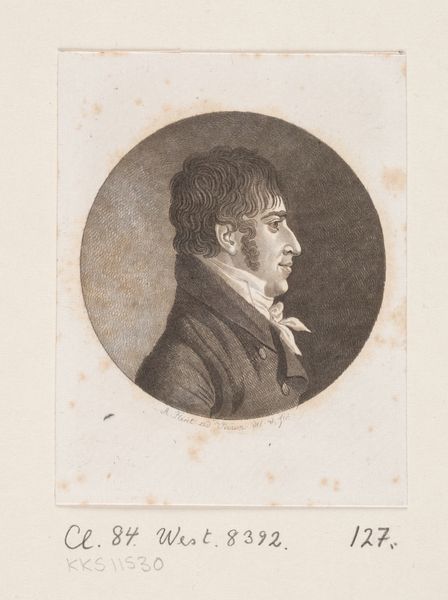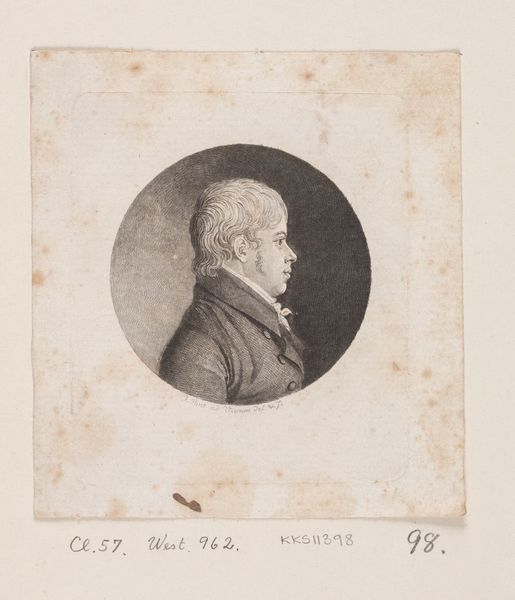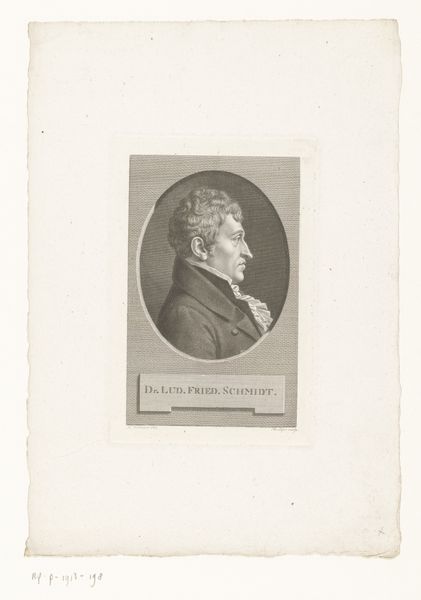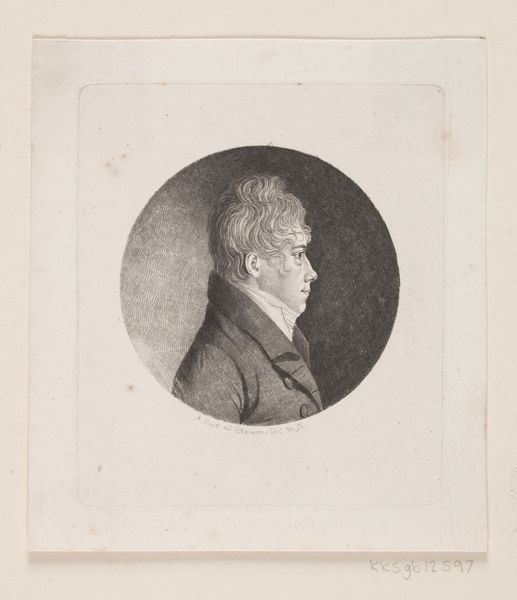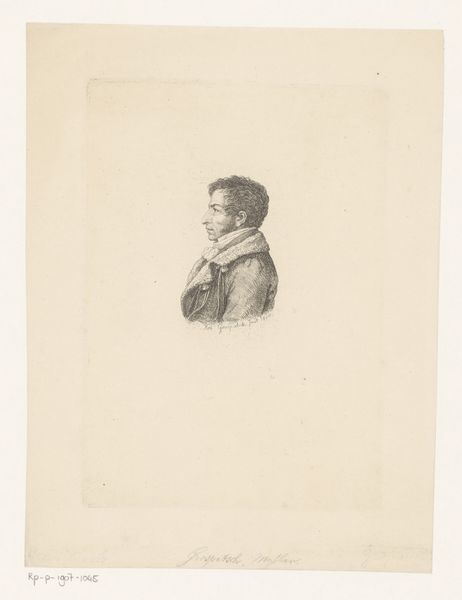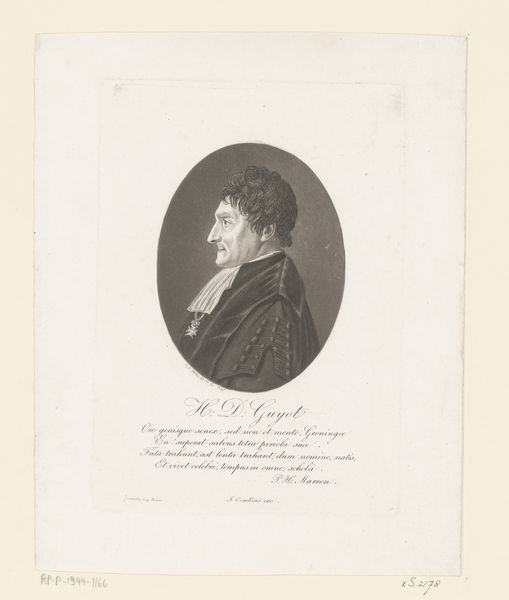
drawing, print, pencil, engraving
pencil drawn
drawing
neoclacissism
charcoal drawing
pencil drawing
pencil
history-painting
engraving
watercolor
Dimensions: 88 mm (None) x 73 mm (None) (billedmaal), 118 mm (height) x 90 mm (width) (plademaal)
Editor: So, here we have "Ubekendt mandsportræt", or "Unknown Man's Portrait", dating from somewhere between 1767 and 1824, housed here at the SMK. It's attributed to Andreas Flint. What strikes me is how… proper he looks, almost austere, despite the soft, wispy curls. What's your take on this work? Curator: "Proper" is a good word. It definitely breathes that Neoclassical air – order, reason, and a hint of that Romantic inner turmoil. It's a profile, which automatically lends a sense of historical gravity, don't you think? Like a Roman emperor on a coin. And yet, Andreas Flint manages to keep it from being completely cold. Notice the detail in the hair, almost playful, defying the strict silhouette. Editor: That contrast is so interesting! The serious outline versus the free curls. It's like the Age of Enlightenment trying to have a bit of fun! Was Flint known for his portraiture? Curator: He certainly had a knack for capturing likeness. This print, and others of his, offer a glimpse into a specific time – a society obsessed with capturing images, of establishing identity through art, of cataloging the world around them. It's that dance between the public face and private self that I find fascinating here. And what's hidden in the name? "Unknown Man's Portrait." Do you think the title suggests that the name will emerge? Editor: That's something to consider! Maybe part of the work *is* the unknown aspect; it speaks to all those stories, like his, that are mostly erased by history. Curator: Absolutely! Sometimes the silences speak as loudly as the pronouncements, don't they? Editor: I think I'll be looking at a lot more portraits now, considering the weight they hold.
Comments
No comments
Be the first to comment and join the conversation on the ultimate creative platform.
